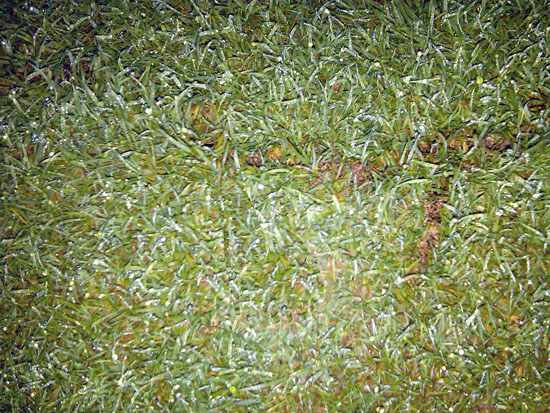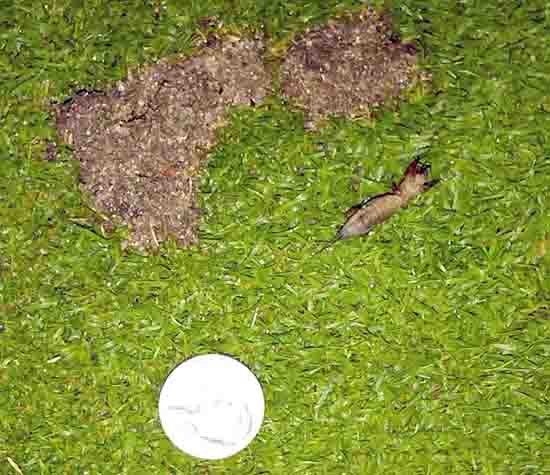Issue 18, October 16, 2009
Mole Cricket Update
After the article on northern mole crickets in the previous issue of this newsletter, damage from this insect has been reported in several other states including Kentucky, Pennsylvania, and Connecticut. These have all occurred after several years without damage reports.
Dr. James Reinert, Texas A&M University, suspects that the damage is due to fall dispersion flights. The tawny mole cricket and other subtropical, turf-damaging mole cricket species capable of flight in the southern U.S. have spring and fall dispersion flights. One flight is associated with mating, but the other is apparently to disperse, that is, to extend their range into other areas. Adult southern mole cricket species fly onto fine turf, burrow into it, but only cause local damage near their entry point. Much more damage is caused by their offspring during the growing season. Northern mole cricket is likely to act similarly, but there is little behavioral information available for that species.
The accompanying photos from Dr. Dan Potter, University of Kentucky, show damage caused by northern mole cricket in Kentucky. It is similar to that caused by adult burrowing after dispersion flights by southern mole cricket species. One photo shows the mole cricket next to the damage.


Even thought the damage appears to be light and localized, this is more northern mole cricket damage than has been reported in Illinois or any other state previously. It is possible that northern mole cricket is changing its behavior and may cause more damage to turf in the future. It is also possible that northern mole cricket numbers are much higher than normal. This species is normally found in saturated or nearly-saturated soil. With two successive years of above average rainfall during the growing season in much of the Midwest and Northeast, it is likely that their numbers might have increased. With higher population numbers, damage due to dispersion flights may have become more obvious.--Phil Nixon
Author:
Phil Nixon